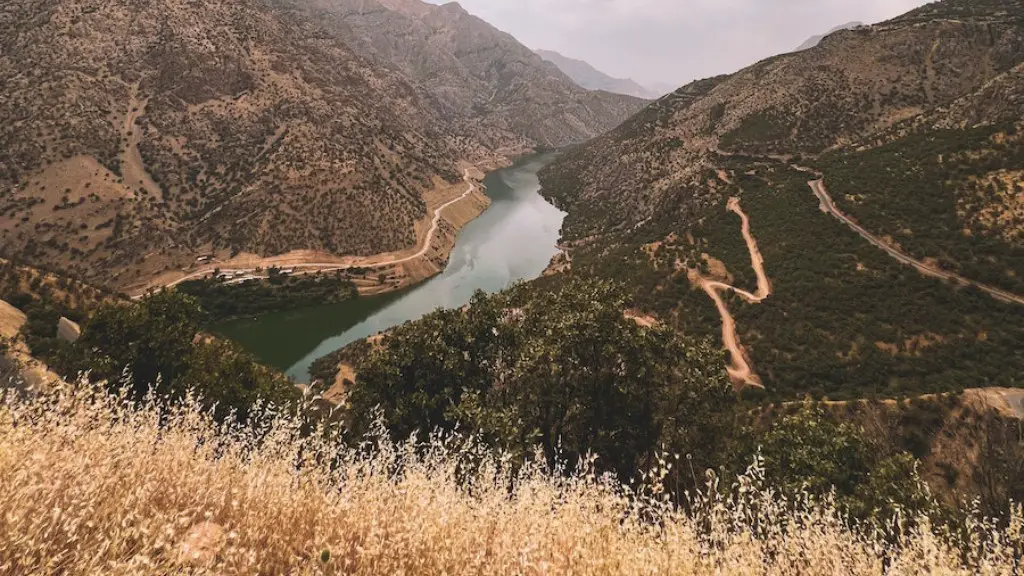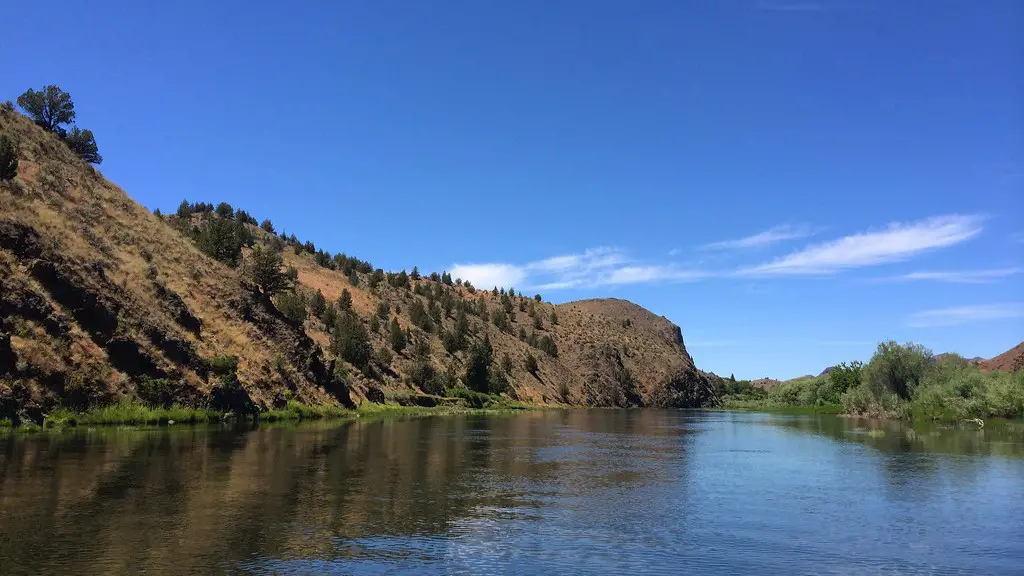The Ganges River is one of the most sacred rivers in Hinduism and is also one of the most polluted. Every year, millions of Hindus travel to the Ganges River to perform religious ceremonies and to bathe in its waters. The pollution in the river has been caused by the dumping of human waste, industrial waste, and agricultural runoff. The Indian government has been trying to clean up the river, but the task is proving to be difficult. There are many organizations and individuals who are working to clean up the Ganges River and to raise awareness about the importance of preserving this sacred body of water.
There are many ways that people are trying to save the Ganges River. One way is by working to improve the water quality. This includes things like increasing sewage treatment and reducing Industrial pollution. Another way is by increasing the amount of water in the river. This can be done through things like rainwater harvesting and afforestation.
What is being done to help the Ganges River?
The Ganga Action Parivar (GAP) has been working to raise awareness about water pollution in India for over a decade. GAP uses a diplomatic approach, communicating with government officials, media outlets and raising funds to bring attention to the issue and demand action from the Indian government.
GAP’s efforts have led to some progress, such as the launch of the National Ganga River Basin Authority in 2009. However, much more needs to be done to clean up the Ganga River and other polluted waterways in India. The GAP will continue to work tirelessly to bring about change and protect India’s water resources for future generations.
The work for creating a sewerage capacity of 526987 (MLD) is under construction. The work for creating River-Front Development:- 70 Ghats/Crematoria projects for construction, modernization, and renovation of 267 Ghats/Crematoria and Kunds/Ponds have been initiated.
What is the Indian government doing to clean up the rivers
The government of India, led by Prime Minister Narendra Modi, has committed nearly $3 billion to a five-year clean-up of the Ganges River. The project is due to be completed in 2020, and it is hoped that it will help to improve the river’s water quality and restore its ecological health. The Ganges is a sacred river in Hinduism, and the Bharatiya Janata Party, which is the ruling party in India, reveres the river. It is hoped that the clean-up project will benefit both the environment and the religious and cultural traditions of India.
The development of waste treatment plants is a key component in the conservation of biotic diversity of the river. By treating waste water before it is discharged into the river, the plants help to keep the water clean and free of pollutants. The development of public amenities such as ghats (bathing areas) and research and development projects also contribute to the conservation of the river.
What is being done to save the Ganges River Dolphin?
The World Wildlife Fund (WWF) is an international organization that works to conserve the world’s natural resources and wildlife. One of the ways they do this is by working to reduce habitat degradation caused by dams, irrigation canals, and water withdrawals. They also work to mitigate pollution of freshwater ecosystems and dolphin deaths from fishing bycatch and deliberate removal of the species.
The government has been working to clean up the river Ganges for the past few years. In 2015, they launched the Namami Gange project with a budget of 200 billion rupees. The project’s goal is to reduce pollution and revive the river. However, the project has been delayed and the deadline has been extended to 2022. The government has allocated an additional 100 billion rupees to the project.
Is Ganga getting cleaner?
The Namami Gange scheme is the Central government’s flagship program to clean up river Ganga. And it seems to be working, if Uttar Pradesh Chief Minister Yogi Adityanath’s Sunday statement is anything to go by. Stating that the scheme has improved river Ganga’s condition, the Chief Minister said that Ganga has become clean now. This is good news for the millions of people who rely on the river for their daily needs. Let’s hope the program can keep up the good work and make the Ganga truly clean.
The paper argues that the flow of rivers will not be significantly affected by the melting of glaciers. The vast majority of river flow is due to rain and snowmelt, which is not affected by glaciers. Therefore, even after the glaciers disappear, river flow will continue unchanged.
What is being done to stop water pollution in India
The Jal Jeevan Mission is an important initiative by the Indian government to provide clean drinking water to rural households by 2024. The mission is especially important in areas where water quality is poor, as it will help improve the health of residents. However, the success of the mission depends on the cooperation of state governments and other stakeholders.
The National Mission for Clean Ganga (NMCG) is a flagship program of the Government of India with the objective of cleaning the river Ganga. The program was launched in 2015 and is being implemented by the National Council for River Ganga (NCRG).
The NMCG is currently in its second phase of implementation, which commenced in April 2019 and will continue till March 2024. The program has an allocated budget of Rs. 20,000 crore (US$2.9 billion) for this phase.
So far, the program has achieved some success in improving the water quality of the river Ganga. However, a lot more needs to be done in order to make the river truly clean. The government has appropriately increased the budget allocation for the NMCG in the Financial Year 2020-21 to Rs. 2,25,000 crores in order to speed up the pace of implementation and achieve the objectives of the program.
How many Ganges sharks are left in the world?
The Ganges sharks are one of the most endangered species of shark in the world. Fewer than 250 of these sharks are believed to still exist. The main threats to the species are habitat loss and overfishing. The Ganges sharks are found in the river systems of the Ganges basin in India. They are a top predator in these waters and play an important role in the ecosystem. The loss of even a few individuals can have a ripple effect on the entire ecosystem.
The pollution of the Ganges is caused by many different factors, including untreated sewage being dumped into the river, industrial waste, agricultural runoff, remnants of partially burned or unburned bodies from funeral pyres, and animal carcasses. This pollution has led to high levels of disease-causing bacteria and toxic substances being found in the river, which can pose a serious health risk to those who come into contact with it.
What happens if you swim in the Ganges
The water is seen as a purifier in Hinduism, and dipping in it is seen as a way to cleanse oneself of sins. Many Hindus will take a dip in any body of water, no matter how dirty it may be, because they believe that the water is still holy. Sprinkling a little water on one’s head is also seen as a way to be blessed by the water.
The River Ganges is one of Asia’s most important river. It flows from the Himalayas all the way to the Bay of Bengal and through some of the most densely populated regions in Asia. Its river basin is more than 1 million square kilometers and is home to over 650 million people. The River Ganges is an important source of water for agriculture, industry, and domestic use. It is also a major transportation route for goods and people. The River Ganges is also a key source of freshwater for many species of fish, plants, and animals.
Why is Ganga water not dirty?
Bacteriophages are viruses that specifically infect and kill bacteria. They are found in all environments where bacteria are present, and each type of bacteriophage preferentially infects and kills a specific type of bacteria. When a bacteriophage infects a bacterium, it injects its genetic material into the bacterium, taking over the bacterium’s metabolic machinery to produce more phages. These new phages then lyse the bacterium, releasing the newly generated phages to infect other bacteria.
The water of the river Ganga is naturally rich in bacteriophages, which helps to keep the bacterial population in check and prevents excessive growth. This is one of the reasons why the river water is considered to be holy and is used for religious purposes.
The Ganges river is one of the most polluted waterways in the world due to the large amount of sewage that is emptied into it every day. Approximately three million litres of sewage are dumped into the river each day, and only around half of that sewage undergoes any kind of treatment before being released. This has resulted in the river’s water being extremely dirty and unsafe for swimming, drinking, or even bathing in. The pollution has also had a negative impact on the local wildlife, as many fish and other animals have died as a result of the contaminated water.
Which is the dirtiest river in India
The Yamuna is one of the most polluted rivers in the world, largely due to the pollution from the metropolis of New Delhi. The Yamuna Flows for 855 miles (1,375km) from its source in the crystal clear waters of the Himalayas, and quickly becomes polluted after travelling through New Delhi. There are many initiatives underway to try to clean up the Yamuna, but it remains a major environmental issue in India.
The river stinks because of the sewage and effluents from the tanneries that goes into it. This is especially a problem during the Kumbh Mela when 200km downstream, bathers are exposed to the toxic heavy metal chromium.
Conclusion
There are many ways in which people are trying to save the Ganges River. Some groups are working to create awareness about the importance of the river and the need to protect it. Others are working to clean up the river and remove the pollution that has accumulated over the years. Still others are working to restore the natural flow of the river and toreverse the damage that has been done to it.
The Ganges River is one of the most sacred and important rivers in India and is also one of the most polluted. The government and different NGOs have been trying to clean up the river for years, but it is still very dirty. People are trying to save the Ganges River by raising awareness about the pollution and working to clean up the river.





